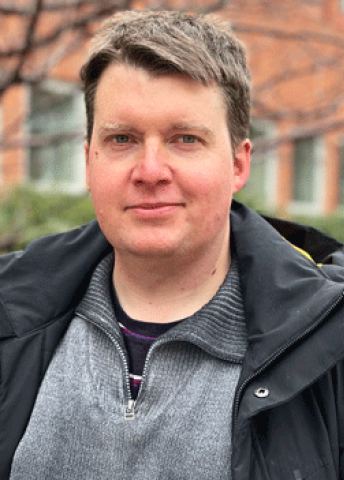
Program for mathematics 2022
Grant to recruit an international researcher
for a postdoctoral position
Professor Michael Björklund
Chalmers University of Technology and University of Gothenburg
Grant to recruit an international researcher
for a postdoctoral position
Professor Michael Björklund
Chalmers University of Technology and University of Gothenburg
The randomness of fractions
Professor Michael Björklund will receive funding from the Knut and Alice Wallenberg Foundation to recruit an international researcher for a postdoctoral position at the Department of Mathematical Sciences, Chalmers University of Technology and University of Gothenburg.
The entire numerical line consists of real numbers, of which some comprise rational numbers, ones which can be written as a fraction of two integers. However, most real numbers cannot be expressed in this manner – they are irrational. The best-known irrational numbers include π and the square root of two, √2. How these irrational numbers should be best approximated using rational numbers has, in its simplest form, been well understood for more than a century. The field of diophantine approximation, which this project is about, examines how well an approximation can be performed using rational numbers for a given real number.
One way of approaching the question is to calculate the number of rational numbers that provide good approximations to a given real number and which have denominators below a specified high limit. It has been known since the 1960s that, for almost all real numbers, their quantity grows towards infinity at an almost exactly logarithmic rate with the given limit for the denominator. Deviations from this rate fulfil a specific form of the central limit theorem, i.e. a normal distribution, as recently proven by Michael Björklund and Alexander Gorodnik.
The purpose of the project is, in the next step, to move beyond the normal distribution. The basis for understanding deviations from the normal distribution is the already well-known analysis of the sums of independent random variables and the central limit theorem. In the case being studied, the random variables are only partially independent, but the analogy may bear fruit and lead to better estimations that those now known.